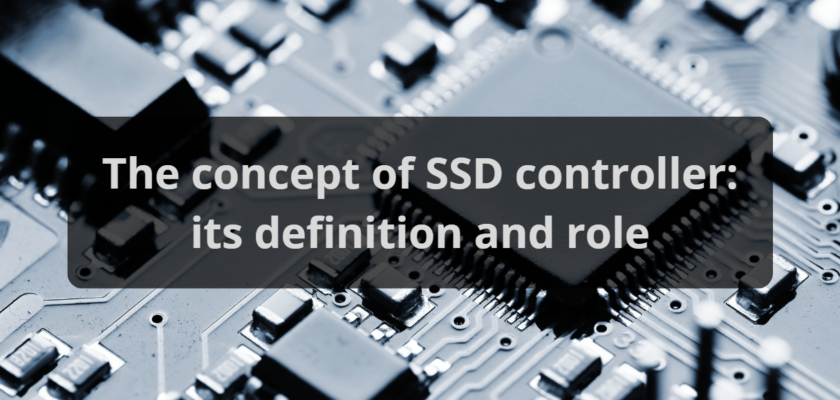A relentless pursuit of speed, reliability, and compactness has marked the evolution of storage devices. Technology has consistently advanced from the magnetic tapes of yesteryears to the spinning disks of Hard Disk Drives (HDDs). The emergence of Solid State Drives (SSDs) heralded a new era, offering unparalleled speed and durability. At the heart of this revolution lies the SSD controller.
Basics of SSDs:
An SSD is a non-volatile storage device that uses NAND-based flash memory to store data. Unlike traditional HDDs, which rely on spinning disks and movable read/write heads, SSDs have no moving parts, leading to faster access and increased durability.
What is an SSD Controller?
The SSD controller is akin to the brain of the SSD. It’s a multifaceted component responsible for managing the data stored on the flash memory and communicating with the computer’s system comprising both physical circuits and firmware, the controller directing the intricate operations within the SSD.
Role and Functions of the SSD Controller:
Data Management and Organization:
- Wear leveling: Flash memory cells degrade after a certain number of write/erase cycles. To ensure longevity, the controller uses wear leveling. It does this by keeping track of how many times each cell has been reported to and then distributing the data evenly across all cells. This prevents any single cell from wearing out prematurely.
- Bad block management: Over time, some memory cells become unreliable. The controller maintains a map of these bad blocks. When a block is deemed bad, the controller redirects data to a healthy block, ensuring data integrity.
- Garbage collection: As SSDs write data in pages but erase data in blocks, overwriting data results in old data blocks being marked as invalid. Over time, this leads to fragmentation. The controller periodically reclaims these blocks, moving valid data to new blocks and erasing the old ones, optimizing storage.
Data Transfer and Communication:
- Interface management: The controller manages the protocol (e.g., SATA, NVMe) that facilitates communication between the SSD and the computer. It translates the computer’s commands into actions on the SSD.
- Speed optimization: The controller uses techniques like DRAM caching, where frequently accessed data is stored in a faster DRAM memory, ensuring rapid data access.
Security and Encryption:
- Data protection: Controllers often integrate encryption engines that encrypt data before storing it on the NAND chips. This ensures the data remains secure even if the drive is removed or accessed externally.
- Secure erase: When data must be deleted, the controller doesn’t just mark it invalid. It overwrites the cells with a series of zeros or random data, ensuring no traces remain.
Error Correction and Reliability:
- Error-Correcting Code (ECC): Due to the nature of NAND memory, errors can occur during data reads. The controller uses ECC algorithms to detect and correct these errors, ensuring data integrity.
- Redundancy: Some controllers use techniques like RAID (Redundant Array of Independent Disks) at the chip level. Data is mirrored across multiple NAND chips, providing a backup in case one fails.
Evolution of SSD Controllers:
From rudimentary designs to today’s sophisticated architectures, SSD controllers have undergone significant evolution. Modern controllers have multiple cores, support for advanced NAND technologies, and enhanced security features.
Importance of the SSD Controller in Overall SSD Performance:
While NAND memory defines an SSD’s storage capacity, the controller dictates its performance. From ensuring swift boot times to rapid file transfers, the controller’s efficiency directly impacts the user experience.
Challenges and Limitations:
Controllers face challenges like heat generation, compatibility with evolving NAND technologies, and the demand for faster speeds. Continuous research aims to overcome these hurdles.
Conclusion:
The SSD controller, often overlooked, is central to SSD technology. As technology advances, the role of the SSD controller becomes increasingly crucial, shaping the future of storage.

